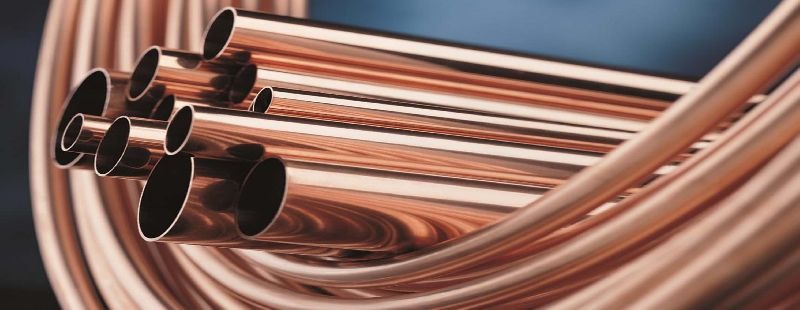When it comes to plumbing systems, the choice of material plays a huge role in determining the efficiency, safety, and durability of the entire network. For decades, one material has consistently stood out as the gold standard in plumbing: the Copper Pipe. Known for its exceptional strength, corrosion resistance, and longevity, copper continues to be the most trusted option among builders, homeowners, and contractors.
In this blog, we’ll explore how Copper Pipes ensure long-lasting plumbing systems, their unique advantages, installation practices, maintenance tips, and why they continue to outperform alternatives like PVC or PEX.
Understanding the Importance of Plumbing Materials
The plumbing system is the backbone of any building—whether it’s a home, office, or industrial facility. It carries water for drinking, cooking, bathing, cleaning, and countless other daily uses. A weak or low-quality material can result in leaks, contamination, and expensive replacements.
This is where copper pipes prove invaluable. They provide the perfect balance of strength, flexibility, and safety, making them a long-term investment rather than just a short-term solution.
What Makes Copper Pipes Special?
Copper pipes aren’t just another option; they’re a proven material that has stood the test of time. Some of the key qualities that make them stand out include:
-
Corrosion Resistance: Copper naturally resists rust and scale buildup, which ensures a smooth water flow for decades.
-
High Durability: A Copper Pipe can last 50–70 years, sometimes even longer, depending on water quality and installation.
-
Heat Tolerance: They can handle both hot and cold water with ease without weakening or deforming.
-
Non-Toxic Material: Unlike some plastics, copper doesn’t release harmful chemicals into the water supply.
-
Eco-Friendly: Copper is 100% recyclable, which reduces environmental impact.
Types of Copper Pipes Used in Plumbing
Not all copper pipes are the same. They come in different grades and thicknesses, each suited for a specific purpose.
1 Type K Copper Pipe
-
Thickest wall among all copper pipes.
-
Ideal for underground installations and commercial projects.
-
Offers maximum strength and lifespan.
2 Type L Copper Pipe
-
Medium-thickness walls.
-
Commonly used for interior plumbing in residential and commercial buildings.
-
Strikes a balance between durability and cost.
3 Type M Copper Pipe
-
Thinner walls than Type L.
-
Less expensive but suitable for indoor water distribution where high pressure isn’t a concern.
4 Copper DWV Pipe (Drain, Waste, Vent)
-
Specifically designed for drain systems.
-
Lightweight and not suitable for high-pressure water supply.
Each type serves a different purpose, but all ensure reliability and efficiency when chosen correctly.
Advantages of Copper Pipes in Plumbing Systems
1 Long Service Life
A well-installed Copper Pipe system can last for several decades without needing replacement, making it a cost-effective choice in the long run.
2 Consistent Water Quality
Copper does not leach harmful chemicals into the water. This ensures that the water remains clean, safe, and uncontaminated, protecting your family’s health.
3 Fire and Heat Resistance
Unlike plastics, copper doesn’t burn or release toxic fumes. This makes it a safer option, especially in kitchens and industrial setups.
4 Low Maintenance Requirements
Because copper resists corrosion and bacterial growth, the plumbing system requires minimal maintenance compared to other materials.
5 Environmentally Sustainable
Copper is fully recyclable, meaning old or replaced pipes can be melted down and reused without losing quality.
How Copper Pipes Contribute to Long-Lasting Plumbing
The phrase “long-lasting plumbing” is often synonymous with Copper Pipe installation. Here’s how copper ensures decades of reliable performance:
-
Strength Against Pressure: Copper can withstand high water pressure without cracking.
-
Corrosion Resistance: Even in areas with hard water, copper resists mineral buildup.
-
Temperature Endurance: It works equally well for hot showers, cold water lines, and even radiant heating systems.
-
Leak Prevention: With proper fittings and soldering, copper offers tight, leak-free joints.
Comparing Copper Pipes with Other Plumbing Materials
1 Copper vs. PVC
-
PVC is cheaper but prone to cracking in cold weather.
-
Copper has better heat resistance and lasts longer.
2 Copper vs. PEX
-
PEX is flexible and easier to install but not as durable.
-
Copper maintains water purity better and offers fire resistance.
3 Copper vs. Galvanized Steel
-
Galvanized steel was once popular but rusts quickly.
-
Copper outperforms with its natural corrosion resistance.
In nearly all comparisons, copper remains the more reliable option for longevity.
Installation Tips for Copper Pipes
While copper is a durable material, proper installation is crucial to maximize its lifespan. Here are some important tips:
-
Always hire a licensed plumber for installation.
-
Use correct soldering techniques to avoid weak joints.
-
Protect pipes from freezing temperatures with insulation.
-
Avoid contact with corrosive materials such as concrete without protective sleeves.
A well-installed Copper Pipe system will deliver decades of trouble-free service.
Common Myths About Copper Pipes
Despite their popularity, several misconceptions surround copper plumbing:
-
Myth 1: Copper pipes corrode quickly.
Truth: Copper is highly resistant to corrosion and often outlasts other metals. -
Myth 2: Copper plumbing is too expensive.
Truth: While the upfront cost is higher, the long lifespan and low maintenance make copper more economical in the long run. -
Myth 3: Copper pipes are outdated.
Truth: Copper is still widely used in modern plumbing because of its unmatched reliability.
Conclusion
The backbone of any reliable plumbing system lies in the materials used. While modern alternatives exist, none combine durability, safety, and eco-friendliness quite like the Copper Pipe. With a proven track record spanning centuries, copper ensures that plumbing systems remain strong, safe, and functional for generations.

